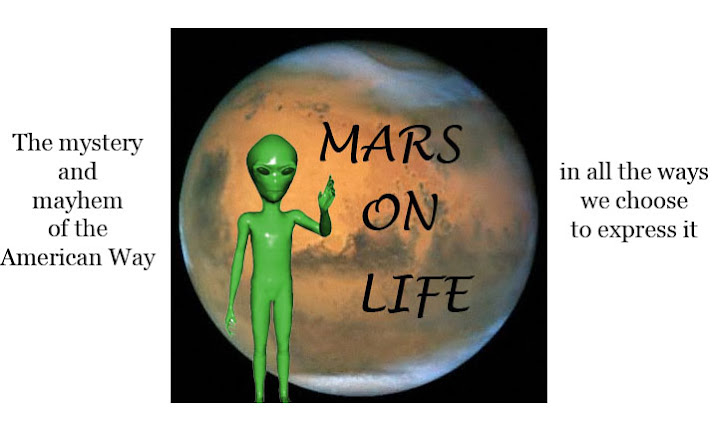In an 1884 essay published in the Pall Mall Gazette, Oscar Wilde dashed off a quick 200 words to address the limitations inherent in wearing high-heeled shoes. Platforms, he suggested, were the answer (or clogs, in the vernacular of the day).
Wilde's proposition was anthithetical to fashion. High heels were needed to keep one's skirts from dragging in th e street, but they also created a difficulty with gait that Wilde claimed "produce(d) that lack of grace which always follows want of freedom."
e street, but they also created a difficulty with gait that Wilde claimed "produce(d) that lack of grace which always follows want of freedom."
The essay was written as a response to an ongoing debate about dress reform, a topic about which Wilde held strong opinions. Writing it gave him "...the pleasure of answering one's critics."
The Armani Privé Spring 2008 Couture Collection was likewise antithetical to fashion, or antithetical to the definition of fashion by amateur fashion critics. Yet in a suburban shopping center, in vast tracts of Australia, on Hollywood's red carpet and at other poles of inaccessibility, Armani's collection is de facto fashion. And why not? An Armani piece is superbly rendered and masterfully cut. One cannot go too far astray wearing Armani; it is one of those international symbols of sleek good taste that readily answer the ever-fraught question of what to wear. In most circles, an Armani garment lifts said question above the comically rhetorical.
The amateur critic, whose avocation it is to be critical and whose opinions are nonetheless not diminished by increasingly impassioned critique, regards Armani as a case of form following function. "Form" in this case is defined as that which advances knowledge and experien ce. For the purposes of this essay we will accept that "function" refers to the designer's past as a tailleur and his ability to construct an unimpeachably exquisite suit. Tailors make suits. There is no disagreement in that simple and unprovocative statement. Tailoring is a time-honored tradition that requires the eye of the hawk and the steady hand of a surgeon.
ce. For the purposes of this essay we will accept that "function" refers to the designer's past as a tailleur and his ability to construct an unimpeachably exquisite suit. Tailors make suits. There is no disagreement in that simple and unprovocative statement. Tailoring is a time-honored tradition that requires the eye of the hawk and the steady hand of a surgeon.
Ah, says the critic, but does Armani make haute couture? And if we define fashion in the terms of haute couture alone, then Armani must be anti-fashion. If he is not anti-fashion, then where is his evolutionary bridge? His designs have eclipsed mere uniformity and have almost become uniforms.
Among the lesser charges are: a lack of whimsy, a lack of raw emotion, a lack of risk. Haute couture is about risk and showmanship, branding, and increasing brand awareness. How and where this translates into sales is a mysterious science best left to accountants. Without risk it veers perilously close to prêt-à-porter and a waste of a Parisian afternoon better spent at Ladurée chomping macarons à la pistache.
As critics, we expect an artistic response to what we might term profitable fashion, and in this light Armani has failed to deliver. All that pearl and dove gray that could be tried on and worn out without alteration or concession. A beautifully rippled Ondine-like gown no doubt destined for a ceremony that may or may not take place. Fifty-two looks and not a futuristic kimono or a sustainable flounce among them.
We are an odd species. Repetition is only permissible in romance novels, not runway shows. Not for us the comfort of the sartorially familiar. We place immense token on imagination and transcendence. We must be seen to keep apace of the times, and yet these are strange and disorienting times. Merely looking good is not the best revenge. There must be more or the artistic dialogue is defeated. It is nearly incumbent upon a creator to step away from a signature and to attempt the uncharacteristic. Even the flop may be redeemed by brinksmanship.
There are limits, naturally: The Galliano Fall 2008 men's collection is said in some circles to have nudged them, even if Galliano is no longer shitting dandy. Armani's gentle mutations of previously exercised forms were evidently pleasurable only to the professional arbiter, whose job it is to write semi-lyrically and to ensure all-important and ongoing advertising revenue.
Somehow, we have determined that haute couture must not be primarily emblematic of lifestyle or social class. This observation splits the broader definition of "fashion" into two realities. If haute couture cannot answer or relieve the monotony of saleable fashion, then it must challenge or at the very least widen our knowledge and provide rewarding emotional content and grist for the mill of dissection.
If we confine ourselves to that narrower logic, then Armani gives us nothing to think about and nothing to revisit for inspiration. Armani does not perform artistic gymnastics or other feats of athletic prowess, like triple axels. Still worse, he does not pause to answer his critics. The stale maxim "Il faut souffrir pour être belle" is not germane to his production. Not only does one not suffer an Armani, the designer himself does not suffer the anomie that permeates the work of certain other haute couture houses. He isn't quite in step with the modern need for responsibility either--not as respects smudging the unsightly lines of class or supporting the burgeoning eco movement.
Any couture designer's output is an extension of and commentary on himself, but in the haute couture it is expected to reflect upon his world more purely than hybrid ready-to-wear/haute couture collections. Outside of haute couture, how this world is translated for the end-user is of paramount importance.
If we see ourselves as a creatively progressive and dynamically au fait species (and really, who would not want to be thought of in those terms?) Armani's collections fail to gibe. We also must factor in the truth that what we think of ourselve we also must think of our surroundings.
When we acknowledge that we must move forward or stagnate, we then must ask how we cognitively process what we see. How do we outline our visions? A slightly modified, yet still identifiable suit is processed as not being updated enough or worse, is seen as a ho-hum retread. Or perhaps it's dismissed as tailoring instead of fashion, as craft instead of couture. We see the negative and the seam, not the positive and the chic.
Lagerfeld sidesteps this complaint because a Chanel cardigan jacket is a historical and affectionate emblem. The flawlessly cut suit, however, is just a flawlessly cut suit. Any tailor worth his weight in gold thread should be able to make one.
Images: Style.com
Wednesday, January 30, 2008
The Pleasure of Answering One's Critics
Labels:
Armani Privé Spring 2008
Subscribe to:
Post Comments (Atom)









9 comments:
Wozza...the ABBA post aside this one of your most brilliant posts! I'm going to numb my mind and watch Legally Blonde and get back to you tomorrow
M
xxx
1) That grey dress looks suspiciously 'influenced' by Dior SS07.
2) Platforms make sense in London (&the West Village). After trying to wobble my way home over the cobbles in my spikes, I now know why platforms have been popular in London since medieval times!
3)This is a GREAT post LLG xx
ps I've blatantly nicked your description of my blog for my home page. (I'm ramping up my blog a bit). Do say if you mind LLG xx
Thanks, IM and LLG!
LLG, I used to shred the heels of suede shoes on cobblestones. They would peel like onions and really were impossible to fix.
I nearly always wear platforms even when walking on level ground. No wobble there, unless on that sandal I posted a couple of weeks ago.
While I agree with your thoughts and feelings on the matter, that isn't why I liked this post so much.
The writing in this post was balm for my soul. I love good grammar, proper punctuation, and a vast vocabulary.
enc, grammar and good punctuation are dying art forms. We are quickly becoming the new illiterati, thanks to the diffusion of erroneous idiom on the Internet. Language has undergone a dreadful devolution in the last decade or so, and it continues to worsen.
I do my part to keep it correct.
Thanks for stopping by!
Armani, IMO, has never been about particularly revolutionary design in modern times, just good design. It doesn't occupy the same space as Comme des Garcons or Martin Margiela in people's heads (at least, not in mine), but it does serve as one of the 'fail-safe' options. And, as Cate Blanchett (sorry to use celeb examples, but that is one lady who wears the hell out of her clothes) demonstrated, it's always possible to make things look adventurous if you yourself are.
This isn't to say that the 'fail-safe' isn't a good thing. Haute couture, traditionally, meant clothing that was made to measure rather than outrageously creative. At least within those parameters, Armani Privé might be seen as couture- it takes effort to construct a perfectly fitted suit, after all. And part of the reason why Armani's repetitiveness hasn't taken on iconic dimensions might be because he (at least, IMO) isn't quite seen as a persona like Lagerfeld and Galliano (or Coco Chanel herself). His signature looks aren't quite as recognisable as his own- maybe that's part of the problem?
Good points, BFH. Hollywood relies so heavily on very carefully edited appearance (not that this is always presented to best advantage, however) that a designer like Armani is at risk of redundancy with the amateur pundits. I believe what he constructs are realizations for the type of woman for whom they are intended, instead of having to make a statement (about who knows what?). It's reliable, sure, but I also find it refreshing to see a beautiful cut taken directly from elegant menswear.
Post a Comment